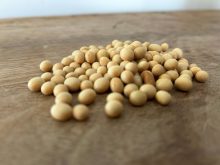MarketsFarm — Sizeable reductions to Argentina’s soybean and corn crops were confirmed in the latest supply/demand estimates (WASDE) from the U.S. Department of Agriculture, with more reductions likely in future reports.
However, attention in the markets is starting to shift to North American weather, with spring seeding just around the corner.
“The USDA was a little more aggressive than the trade thought in lowering Argentina corn and soybean production, and also taking down (U.S.) corn exports by 75 million bushels,” said Terry Reilly of Futures International in Chicago.
Read Also

IGC raises 2025/26 world wheat, corn crop forecasts
Global stocks of grain are set to increase during the 2025/26 season for the first time in four years, the International Grains Council said on Thursday as it raised its forecasts for both wheat and corn crops.
Argentina’s soybean crop was estimated at only 33 million tonnes, according to USDA, which was down from 41 million in February. Brazil’s soybean production was left unchanged at a record 153 million tonnes, while world soybean carryout was down by two million from the previous month, at 100 million tonnes.
For corn, Argentina’s corn production was dropped by seven million tonnes from February to 40 million tonnes. Brazil’s crop was left unchanged at 125 million tonnes. The world corn carryout was raised, due in part to reduced U.S. export expectations.
USDA pegged U.S. corn exports during the 2022-23 marketing year at 1.815 billion bushels, which would be down by 75 million from February. Soybean exports were raised to 2.015 billion bushels, from 1.99 billion.
However, soyoil exports were down by 200 million lbs. from February, at only 500 million. That compares with the 1.773 million lbs. exported the previous year and would mark the lowest level of the past few decades, according to Reilly.
Both the corn and soyoil export numbers were “a little concerning,” he said, but added that the declining crops out of Argentina were supportive for prices overall.
“For now, look for the trade to start watching North American weather patterns,” said Reilly, noting spring planting will get underway over the next few weeks in the southern U.S.
“The South American story is not done yet,” said Reilly, “but people will start to trade March (acreage) intentions and stocks data over the next few weeks.”
Both the quarterly stocks and prospective plantings reports will be released March 31.
— Phil Franz-Warkentin reports for MarketsFarm from Winnipeg.
















